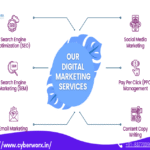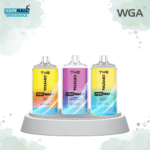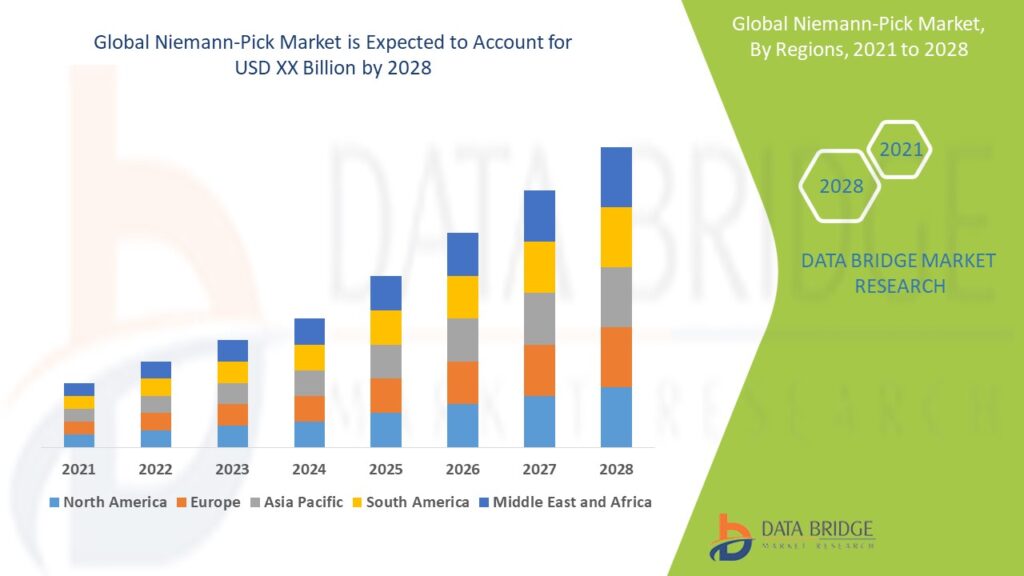Niemann-Pick Disease (NPD) is a rare, inherited lysosomal storage disorder that severely affects the body’s ability to metabolize fat (lipids) within cells. This results in the harmful accumulation of lipids in vital organs such as the liver, spleen, lungs, bone marrow, and, in some forms, the brain. The disease is genetically classified into types A, B, and C, each with varying degrees of severity, symptoms, and life expectancy.
Though extremely rare, the Niemann-Pick Disease market is gaining increasing attention due to advancements in gene therapy, enzyme replacement therapies (ERTs), and supportive care innovations. Governments, researchers, and pharmaceutical companies are collaborating to develop effective diagnostics, promote early intervention, and fund orphan drug development.
Get More Details: https://www.databridgemarketresearch.com/reports/global-niemann-pick-market
Understanding Niemann-Pick Disease
Types of Niemann-Pick Disease
-
Type A (Infantile Form)
-
Occurs in early infancy, particularly among Ashkenazi Jewish populations.
-
Characterized by rapid neurodegeneration, leading to death by 2-3 years of age.
-
-
Type B (Chronic Visceral Form)
-
Primarily affects liver, spleen, and lungs without significant neurological involvement.
-
Patients can live into adulthood with appropriate management.
-
-
Type C (Neurodegenerative Form)
-
Caused by mutations in NPC1 or NPC2 genes.
-
Impacts cholesterol and lipid trafficking in cells, leading to progressive neurological decline.
-
Onset can occur from infancy to adulthood.
-
Market Overview
The global niemann-pick market size was valued at USD 923.81 million in 2024 and is projected to reach USD 1417.76 million by 2032, with a CAGR of 5.50% during the forecast period of 2025 to 2032. .
Key Market Drivers
💊 Orphan Drug Development Incentives
Governments and regulatory bodies such as the FDA and EMA provide incentives (e.g., tax credits, market exclusivity) for developing treatments for rare diseases.
🧬 Advancements in Gene Therapy
Gene therapy holds promise for curing or significantly altering the disease trajectory, especially for Niemann-Pick type C.
🧪 Growing Clinical Trials and Research Grants
Major biotech firms and academic institutions are conducting clinical studies to test enzyme replacement, substrate reduction therapy, and small molecule drugs.
🧍♂️ Patient Advocacy and Early Diagnosis
Organizations like Niemann-Pick UK (NPUK), National Niemann-Pick Disease Foundation (NNPDF), and INPDA play vital roles in patient support, funding research, and raising awareness.
Current and Emerging Therapies
1. Enzyme Replacement Therapy (ERT)
-
Xenpozyme (olipudase alfa) developed by Sanofi, is the first approved ERT for Niemann-Pick Type B. It helps break down accumulated sphingomyelin.
2. Substrate Reduction Therapy (SRT)
-
Miglustat is used to reduce lipid accumulation in Niemann-Pick Type C, though it is not a cure.
-
Arimoclomol, a heat shock protein booster, showed promise in trials for NPC but faced mixed results.
3. Gene Therapy and RNA-based Therapeutics
-
Companies are developing viral vector-based gene therapies targeting NPC1 mutations.
-
CRISPR gene editing and mRNA-based platforms are also being explored in preclinical studies.
Regional Analysis
-
North America leads the market due to strong research infrastructure, regulatory support, and biotech funding.
-
Europe follows closely with several EMA-approved orphan drugs and centralized healthcare systems.
-
Asia-Pacific is emerging as a growth region with increasing investments in rare disease diagnostics and gene therapy trials.
Challenges in the Niemann-Pick Market
-
High Cost of Treatment: ERTs and orphan drugs are extremely expensive, limiting accessibility.
-
Limited Awareness Among Clinicians: Misdiagnosis or delayed diagnosis remains common due to rarity and symptom overlap.
-
Regulatory and Ethical Hurdles: Gene therapy faces stringent scrutiny before approval.
-
Small Patient Population: Makes it difficult to conduct large-scale clinical trials and ensure commercial viability.
Future Outlook
The Niemann-Pick market is poised for transformation with increasing focus on precision medicine, biomarker discovery, and multi-modal therapies. Partnerships between pharma companies, universities, and rare disease advocacy groups will be crucial to bring affordable and effective treatments to patients globally.
FAQs
1. What causes Niemann-Pick disease?
It is caused by genetic mutations that impair the body’s ability to break down lipids. Types A and B result from mutations in the SMPD1 gene, while Type C is linked to NPC1 or NPC2 mutations.
2. Is there a cure for Niemann-Pick disease?
Currently, there is no complete cure, but symptomatic treatments, ERT, and experimental gene therapies are helping manage the disease and improve life expectancy and quality.
3. What is the life expectancy of someone with Niemann-Pick disease?
It varies by type:
-
Type A: 2–3 years
-
Type B: Can live into adulthood with management
-
Type C: Life expectancy ranges from early teens to 30s, depending on onset and treatment
4. What companies are leading research in this market?
Key players include Sanofi (Xenpozyme), Orphazyme, Cyclo Therapeutics, IntraBio, and Mallinckrodt, among others engaged in clinical trials and drug development.
5. How is the disease diagnosed?
Diagnosis involves genetic testing, enzyme activity assays, MRI scans, and lipid accumulation studies, especially in the liver, spleen, and brain.
- Global Niemann-Pick Market Size, Share, and Trends Analysis Report – Industry Overview and Forecast to 2032
- The global niemann-pick market size was valued at USD 923.81 million in 2024 and is projected to reach USD 1417.76 million by 2032, with a CAGR of 5.50% during the forecast period of 2025 to 2032.
- Niemann-Pick Disease Market Share
Related posts:
 Best Website Designer and Web Design Solutions with Cyberworx Technologies
Best Website Designer and Web Design Solutions with Cyberworx Technologies
 Plumbing SEO Agency Hacks: Easy Ways to Increase Your Business Earnings
Plumbing SEO Agency Hacks: Easy Ways to Increase Your Business Earnings
 Enjoy Ultra 9000 Box of 10 – Power, Flavour, and Convenience Combined
Enjoy Ultra 9000 Box of 10 – Power, Flavour, and Convenience Combined
 Crystal Pro Max + 10000 Box of 10: Long-Lasting Flavour from a Trusted Vape Store in UK
Crystal Pro Max + 10000 Box of 10: Long-Lasting Flavour from a Trusted Vape Store in UK
 Outrank Competitors with Help from a Trusted Denver SEO Agency
Outrank Competitors with Help from a Trusted Denver SEO Agency
 ( How SEO Can Be a Game Changer for Your Startup in Australia ) high-speed and competitive startup ecosystem, especially in nations like Australia, business exposure and gaining new customers are no easy feat. With limited funds and minimal resources, startups need strategies that are both effective and cost-efficient
( How SEO Can Be a Game Changer for Your Startup in Australia ) high-speed and competitive startup ecosystem, especially in nations like Australia, business exposure and gaining new customers are no easy feat. With limited funds and minimal resources, startups need strategies that are both effective and cost-efficient
 Integrative Neuro Therapy Certification – Certified Training in Functional & Holistic Approaches
Integrative Neuro Therapy Certification – Certified Training in Functional & Holistic Approaches
 Everything You Need to Know About Lifeguard Certification Exams
Everything You Need to Know About Lifeguard Certification Exams








